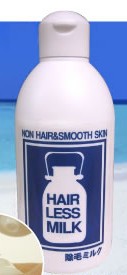In a course of the showdown prior the Lower House elections in Japan on September 11th, the major political parties published their "manifests". The flavor of the foreign word has been used to increase the importance of those policy documents, what essentially are just party’s pledge.
Jouhoublog is a joint blog - post or send comments to ![]() .
.
Technorati Tags: MHLW; Japanese regulatory affairs
Recently, FDA updated the labeling of the three leading oral erectile dysfunction (ED) medications (Cialis, Levitra and Viagra) with a warning about the sudden vision loss, attributed to NAION (non arteritic ischemic optic neuropathy). While such updates are fairly common in the post-marketing period of any drug, in the case of Viagra it brought to the surface some information not very willingly disclosed by its maker. In the efforts to downplay the significance of NAION incidence, Pfizer reported that by mid-2005 a total of 27 million men have taken safely Viagra…
That’s it! For full seven years since the launch in 1998, Viagra has been used by only 1% of the world’s male population. Is this more, or less or in the range of what has been expected? Given the massive advertising campaign (over 100 million US$ in US alone), the unprecedented public interest and brand awareness, the common belief was - and likely still is, that Viagra is already taken virtually by everybody.
Jouhoublog is a joint blog - post or send comments to ![]() .
.
Technorati Tags: MHLW; Japanese regulatory affairs
One of the very prompt questions following the Eril mystique posting asked about www.eril.jp.
 Against all educated guesses, it turned out not to be a product site of Asahi Kasei. It is online shop of small distributor of cosmetics, dieting and beauty goods, doing business as "Eril" and on the top of its catalog under number Eril ck01 is a product named "Hairless Milk". Should we mention it here? Whatever hideous, the "Hairless Milk" is approved by MHLW in Japan as quasi-drug, otherwise there are no relations with cardiovascular Eril. But what about the 17-old trademark?
Against all educated guesses, it turned out not to be a product site of Asahi Kasei. It is online shop of small distributor of cosmetics, dieting and beauty goods, doing business as "Eril" and on the top of its catalog under number Eril ck01 is a product named "Hairless Milk". Should we mention it here? Whatever hideous, the "Hairless Milk" is approved by MHLW in Japan as quasi-drug, otherwise there are no relations with cardiovascular Eril. But what about the 17-old trademark?
Jouhoublog is a joint blog - post or send comments to ![]() .
.
Technorati Tags: MHLW; Japanese regulatory affairs
Since 2001 we have received dozens of inquires about Eril. Surprising is also the span of the inquirers – from US testing laboratories to product developers in EU to university researchers. Why Eril?
Eril (fasudil hydrochloride hydrate) was discovered by Asahi Kasei KK in 1980s. It is absolutely impossible to decipher the name of Eril, even knowing the typical for those years penchant for cryptic and “meaningful” abbreviations. The name of the pharmaceutical form Eril Inj. S stands for: Epoch-making relaxant for ischemic locality Injections Sun. Obviously afraid that somebody else might come with the same pearl, the maker registered Eril as a trademark  in 1988 – more than ten years before the approval and much earlier before the clinical trials ever began. The picture on the left is the actual image deposited to the Japan Patent Office.
in 1988 – more than ten years before the approval and much earlier before the clinical trials ever began. The picture on the left is the actual image deposited to the Japan Patent Office.
Eril is rarely advertized and for an epoch-making product sells somewhat weakly in Japan – chalking at average 10-12 millions US$ annually. But the inquiries keep coming…
Jouhoublog is a joint blog - post or send comments to ![]() .
.
Technorati Tags: MHLW; Japanese regulatory affairs
Quite a few of our customers are trying to use the search engine of the www.jouhoukoukai.com web site to retrieve Japanese regulatory documents. Recently, a user queried the site for a particular document until exhausted all possible syntax combinations:
- notification no 1831
- "notification no 1831"
- "notification 1831"
- +notification +no +1831
- "notification no. 1831"
The search has ended with “not found” but not because of the information regarding the “Notification No. 1831” is not available or the queries were not diligent. Until 2000 the Pharmaceutical Affairs Bureau (PAB) and its successors from 1997 - the Pharmaceutical and Medical Safety Bureau (PMSB), and from 2001 - the Pharmaceutical and Food Safety Bureau (PFSB) simply numbered the released documents in order of issuing what resulted in non-descriptive document numbers such as “1831”, and hence now there are two – completely unrelated documents under one and the same number (1831) and distinguished only by the title and date of issue. The older PMSB/ELD Notification No. 1831 (dated December 17, 1999) is entitled “On the Guidelines Concerning Clinical Studies of Medicinal Products in Pediatric Group (draft)”, while the more recent one of December 27, 2000 is on “Revision of the Guideline for Timing of Preclinical Studies in Relation to Clinical Trials”.
Jouhoublog is a joint blog - post or send comments to ![]() .
.
Technorati Tags: MHLW; Japanese regulatory affairs
One of the unapproved anti-cancer products, recommended so far by the Committee for the Examination of the Use of Unapproved Medicinal Products for domestic development is thalidomide, which was once registered and in 1962 withdrawn in Japan. The task for clinical development with a sole indication for treatment of multiple myeloma is being undertaken by the Fujimoto Seiyaku KK. The Osaka-based company is small, discloses its staff (about 300), but not the revenues. Apparently, it is run in a very traditional way, so one may wonder how it will survive the PR barrage while developing the notorious compound. On July 20, 2005 in what it seemed as a rare press conference the Fujimoto’s management reported the progress in planning the clinical trials: IRBs of 22 hospitals accepted the protocol and the recruitment of patients through informed consent has started. However, the trials are amidst of a considerable controversy. While for years the Japanese branch of International Myeloma Foundation (IFM Japan) has lobbied for official registration (in contrary to private use legal import), the relatives of the 60s disaster victims are voicing strong concerns regarding the safety. Surprisingly or not, no references of any kind about thalidomide on the web site of Fujimoto have been posted.
Jouhoublog is a joint blog - post or send comments to ![]() .
.
Technorati Tags: MHLW; Japanese regulatory affairs